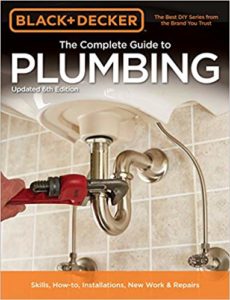The Complete Guide to PLUMBING 6th Edition
The Complete Guide to PLUMBING 6th Edition
The Complete Guide to PLUMBING 6th edition has been thoroughly updated to ensure that all information conforms to the most recent codes, including the 2015 Uniform Plumbing Code and the 2014 International Residential Code. New projects include plumbing and tiling a cur-bless shower. Other features include projects to promote accessibility in the bathroom; updated bathroom ventilation featuring new products; and an expanded section on exterior plumbing, including pools, pumps, and sprinkler systems.
Because most of a plumbing system is hidden inside walls and floors, it may seem to be a complex maze of pipes and fittings. But spend a few minutes with us and you’ll gain a basic understanding of your system. Understanding how home plumbing works is an important first step toward doing routine maintenance and money‑saving repairs. A typical home plumbing system includes three basic parts: a water supply system, a fixture and appliance set, and a drain system. These three parts can be seen clearly in the photograph of the cut‑away house on the opposite page.
You can also Read Rectangular Industrial Duct Construction Standards
The Complete Guide to PLUMBING 6th Edition Content
- Introduction
![The Complete Guide to PLUMBING]()
- INSTALLING FIXTURES & FAUCETS
- INSTALLING PLUMBING LINES
- PLUMBING REPAIRS
- PLUMBING TOOLS, MATERIALS & SKILLS
- Glossary
- Measurement Conversions
- Resources
- Photo Credits
- Index
The water supply to fixtures and appliances controlled with faucets and valves. Faucets and valves have moving parts and seals that eventually may wear out or break, but they easily repaired or replaced. Waste water then enters the drain system. It first must flow past a drain trap (5), a U‑shaped piece of pipe that holds standing water and prevents sewer gases from entering the home. Every fixture must have a drain trap.
The drain system works entirely by gravity, allowing waste water to flow downhill through a series of large‑diameter pipes. These drain pipes attached to a system of vent pipes. Vent pipes (6) bring air into the drain system to prevent suction or pressure that might allow the trap to lose its water seal. Vent pipes usually exit the house at a roof vent (7). All waste water eventually reaches a drainage stack or a building drain (8).


Good